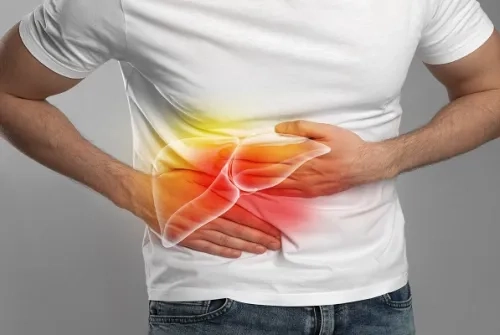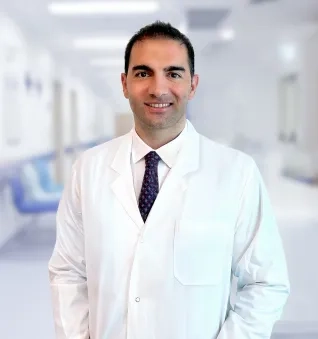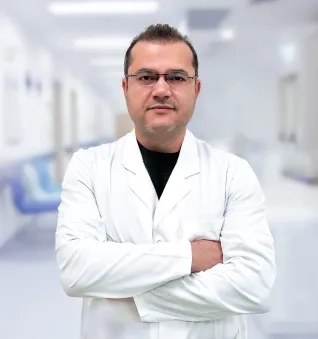Alo Yeditepe
Alo Yeditepe
What are the Symptoms and Treatment Methods of Cirrhosis?
What is Cirrhosis?
The liver is the largest of our internal organs, weighing approximately 1.5 - 2 kilograms, and is the only organ in the body that has the ability to self-renew. This organ, which has great importance in fulfilling the body's vital functions; It plays a role in purifying the blood from all kinds of chemicals, drugs and toxins. Cirrhosis is an advanced liver disease in which healthy liver tissue is replaced by scar tissue and the liver is permanently damaged. Scar tissue is tissue that forms due to long-term illness or injury.
Cirrhosis can develop due to various reasons. The most common causes include chronic alcohol consumption, viral hepatitis B and C infections, fatty liver disease (non-alcoholic fatty liver disease), autoimmune hepatitis, liver damage caused by drugs or toxins, and genetic disorders. These factors lead to inflammation in liver cells, fibrosis (scar tissue formation) and eventually cirrhosis.
Cirrhosis is characterized by fibrotic (scar tissue) replacing healthy tissue in the liver. This condition prevents the liver from performing its normal functions. As cirrhosis progresses, liver functions become increasingly impaired. These include important tasks such as removing toxins and waste from the body, protein synthesis, bile production, vitamin and mineral storage and regulating metabolism processes.
What are the symptoms of cirrhosis?
Signs and symptoms of cirrhosis may vary depending on the stage of the disease. In the early stages, symptoms may be mild or not present at all. However, as the disease progresses, the following symptoms may occur:
• Fatigue and weakness
• Loss of appetite and weight loss
• Abdominal pain and swelling
• Nausea and vomiting
• Yellowing of the skin and eyes (jaundice)
• Edema (swelling) in the legs
• Skin itching
• Tendency to easy bruising and bleeding
• Mental confusion, memory problems and behavioral changes
Cirrhosis is a progressive disease if left untreated and can lead to liver failure, liver cancer and serious complications. Treatment of cirrhosis is based on determining the underlying cause and applying appropriate treatment strategies. In some cases, liver transplantation may be required. With early diagnosis, appropriate treatment and lifestyle changes, the progression of cirrhosis can be slowed down and complications can be prevented.
Who Gets Cirrhosis?
Cirrhosis can occur at any age and in any gender. However, some risk factors and causes may increase the likelihood of developing cirrhosis. Here are some common risk factors for cirrhosis:
• Chronic Alcohol Consumption:
Alcoholic cirrhosis is a type of cirrhosis that develops as a result of chronic and excessive alcohol consumption. Alcohol can cause serious damage to the liver, and long-term alcohol consumption can lead to cirrhosis.
• Viral Hepatitis B and C Infections:
Chronic hepatitis B or C infections can cause inflammation and damage to the liver that can lead to cirrhosis over time.
• Fatty Liver Disease:
Non-alcoholic fatty liver disease is characterized by fat accumulation in the liver. When this condition progresses, it can progress to fibrosis and cirrhosis.
• Autoimmune Diseases:
Autoimmune hepatitis is an autoimmune disease in which the body's immune system attacks liver cells. This constant inflammation can lead to liver damage and cirrhosis.
• Genetic Disorders:
Some genetic disorders can cause metabolic problems or the buildup of toxins in the liver. For example, disorders such as Wilson's disease and hemochromatosis can lead to cirrhosis.
• Chronic Hepatitis D Infection:
Hepatitis D virus occurs along with hepatitis B virus infection. This combined infection can cause liver damage and cirrhosis.
Other risk factors include being overweight (obesity), diabetes, chronic biliary tract disease, long-term medication use (e.g., methotrexate), long-term toxic exposure (e.g., arsenic or mercury), certain immune system disorders, and congenital anomalies such as biliary atresia. can be found.
However, it should be noted that cirrhosis does not always develop in people with these risk factors, and the causes of cirrhosis cannot be determined in some people. To reduce the possibility of developing cirrhosis, it is important to maintain a healthy lifestyle, minimize risk factors and have regular doctor check-ups.
Is Cirrhosis a Dangerous Disease?
Yes, cirrhosis is a fatal disease. Cirrhosis is a progressive disease characterized by severe damage to the liver over time. As cirrhosis progresses, the normal functions of the liver are disrupted and complications occur.
Cirrhosis occurs when healthy liver tissue is replaced by scar tissue. Fibrotic tissue prevents the liver from performing its normal functions. The liver regulates the body's metabolic processes, removes toxins and waste, synthesizes proteins, produces and stores bile, and processes vitamins and minerals. However, as cirrhosis progresses, these functions become severely impaired.
What are the Complications Due to Cirrhosis?
Cirrhosis can bring many complications and affect the function of vital organs.
For example:Liver Failure: As cirrhosis impairs the function of the liver, liver failure may occur as it progresses. Liver failure means the body is unable to perform its basic functions and can affect vital organs.
Liver Cancer: People with cirrhosis have an increased risk of developing liver cancer (hepatocellular carcinoma), which is one of the complications of cirrhosis. Liver cancer is also a fatal condition.
Portal Hypertension: Cirrhosis can cause increased pressure in a large vascular system called the portal vein due to impaired circulation in the liver. This condition is known as portal hypertension and can lead to serious complications that can be fatal, especially portal vein thrombosis of the liver, bleeding from varicose veins (especially esophageal varices), or accumulation of fluid in the abdominal cavity due to acid (ascites).
Encephalopathy: As liver failure progresses, toxins may accumulate in the brain due to the liver's inability to effectively clear toxins and waste. This condition is called encephalopathy and can present with symptoms such as changes in consciousness, mental confusion, memory loss and behavioral changes.
Factors affecting the course of cirrhosis depend on several factors, such as the underlying cause, treatment approach, and the person's general health condition. With early diagnosis, appropriate treatment and regular follow-up, the progression of cirrhosis can be slowed down and complications can be prevented. However, in advanced stages, cirrhosis can become a fatal condition. Therefore, prevention, early diagnosis and appropriate treatment of cirrhosis are of great importance.
How is Cirrhosis Treated?
Cirrhosis treatment varies depending on the underlying cause of the disease and the stage of cirrhosis. The following treatment approaches can be used to slow the progression of cirrhosis, manage complications, and support liver function:
• Treatment of the Underlying Cause:
Treatment of factors that cause cirrhosis is important. For example, if alcohol consumption has caused cirrhosis, it is important to quit drinking alcohol completely. If there are viral hepatitis infections, appropriate antiviral medications can be used.
• Management of Complications:
Complications that arise as cirrhosis progresses must be managed. For example, if varicose veins are at risk of bleeding due to portal hypertension, medications (beta blockers) can be applied to prevent variceal bleeding or endoscopic interventions (ligation, sclerotherapy) can be applied to treat varicose veins.
• Nutritional Support:
Nutrition is important in people with cirrhosis. Protein intake can be limited and the diet should be suitable for liver health. An appropriate nutrition program should be created under the guidance of a dietitian.
• Liver Transplantation:
When cirrhosis progresses and liver failure becomes apparent, liver transplantation may be considered. This is a treatment option that can save lives in patients with advanced stage cirrhosis. However, it is necessary to find a suitable donor and be a suitable candidate for liver transplantation.
• Management of Symptoms:
Certain medications may be used to manage symptoms related to cirrhosis. For example, if there is edema (swelling), diuretic medications may be prescribed. In case of skin itching, antihistamines or lotions can be used.
The treatment plan should be individualized for each patient and guided by an expert healthcare team. It is important for people with cirrhosis to continue regular doctor check-ups, to monitor treatment and to detect possible complications early. It is also important to adopt a healthy lifestyle, limit alcohol consumption, eat a balanced diet and exercise regularly to slow the progression of cirrhosis and reduce complications.
This content was prepared by Yeditepe University Hospitals Medical Editorial Board.
”
See Also
- Fall from Height Led to Kidney Failure, Saved by Sister's Donation
- What is a Liver Transplant, How is it Done? and Who is it For?
- Journey of Hope from Georgia to Turkey: 63-Year-Old Father Donates Kidney to Son
- Does Secondhand Smoke Increase the Risk of Breast Cancer?
- Birthday Gift Becomes a Gift of Life: Kidney Donation from Husband of 20 Years
- Can Liver Cancer Be Prevented?
- Common Misconceptions About Kidney Transplantation
- 19 Years Old Davut MİNAZ, Who Lost 45 Kilos in 4 Months, Clung to Life with His Father's Kidney
- What are the Problems Requiring Gallbladder Surgery?
- Gallbladder Surgery is a Necessity, Not a Choice
- What is Organ Donation?
- What is Gallbladder Surgery?
- Colorectal Cancers and Treatment Methods
- Patched Solution for Umbilical Hernia
- Breast Cancer Diagnosis and Treatment Methods
- 3 Major Developments Shaping Treatment in Colon Cancer
- Can Weight Loss Despite Not Dieting Be a Sign of Cancer?
- The Biggest Obstacle to Early Diagnosis of Breast Cancer: LACK OF INFORMATION
- Serious Risk Factor for Colon Cancer: Heredity
- He Came to Turkey to Get Rid of the Colostomy Bag
- Breast Protective Surgery Is Not Recommended in the Treatment of Multifocal Breast Cancer
- Does Breast Cancer Risk Decrease During Pregnancy and Breastfeeding?
- Breast Cancer Incidence Age Is Decreasing Day by Day
- Early Detection Is Cancer's Most Powerful Enemy
- Breast Cancer Has Dethroned Lung Cancer for The First Time! But, Why?
- Age of Breast Cancer Prevalence Falls, yet Mortality Declines
- Liver Cancer (Tumor) and Treatment
- Gallbladder Stones
- What Is Appendicitis?
- What is a Kidney Transplant?
- Hemorrhoid Treatment
- Questions About Gastroenterology Surgery
- Surgery for Breast Cancer and Breast Aesthetics Can Be Performed Simultaneously
- What are the Types of Obesity Surgeries?
- Questions About Obesity Surgery
- New Study Surprised: “Mortality Increased in Breast Cancer Cases Under the Age of 40”
Alo Yeditepe







